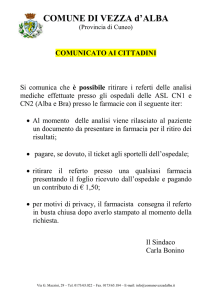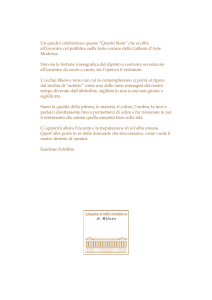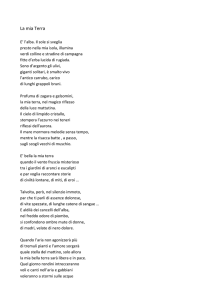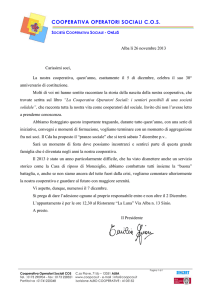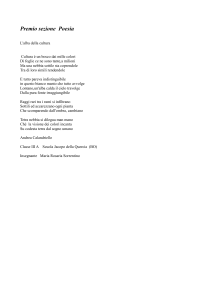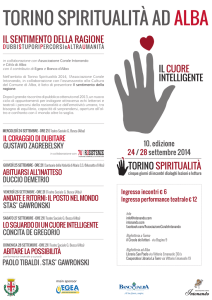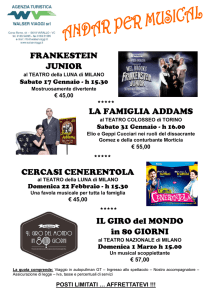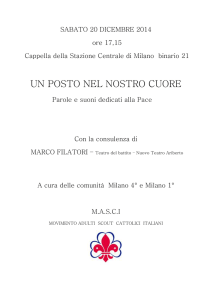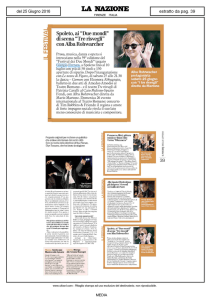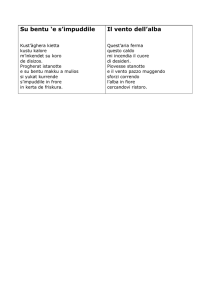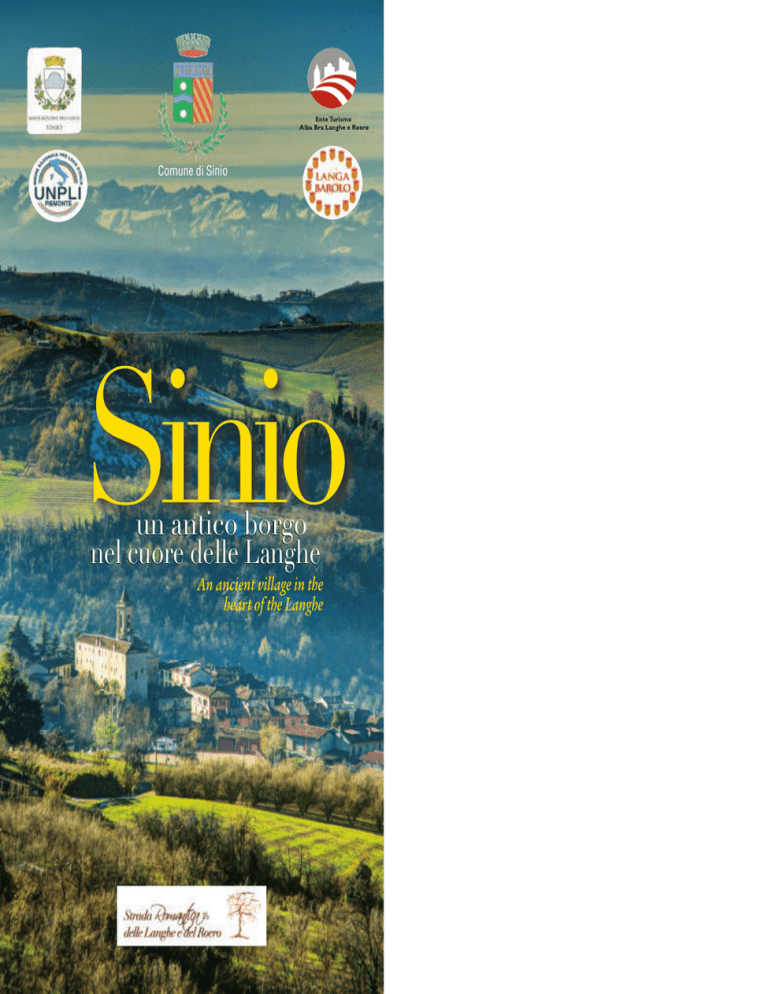
Comune di Sinio
Sinio
un antico borgo
nel cuore delle Langhe
An ancient village in the
heart of the Langhe
Sinio
e il suo territorio
Partendo da Alba e risalendo il percorso del torrente Talloria, nel cuore
della valle si raggiunge Sinio, l’antico «Sineum». È
un luogo oggi principalmente rurale e turistico.
Risale all’epoca medievale, ma con riferimenti storici ancor più antichi nella
località Reale. La denominazione del paese ha due
possibili interpretazioni.
Una è di carattere morfologico (dal termine latino
sinus), come rivela anche
il suo stemma originario:
quale notevole seno del
corso del torrente in corrispondenza della collina
su cui è situato il concentrico; un’altra prevalente di carattere
prediale (dall’appellativo latino «Sinium») ovvero dal possibile
nome Sinnius distintivo del pristino titolare di un possedimento con masseria d’età romana (il suo fundus), da cui originò
la corte altomedievale.
Il territorio comunale di Sinio si estende su colline fascinose
delle Basse Langhe albesi, caratterizzate da vigneti e noccioleti, da boschi e forre, con varie località di notevole interesse
naturalistico o panoramico. L’altitudine varia da 260 a 577
metri s. l. m. L’apice del concentrico è a metri 357 s. l. m. Sinio non è solo sede di laboriosità agricola, di cultura, ma pure
di eno-gastronomia e di ospitalità turistica, nonché di attività
imprenditoriali ed associative. Fa parte dell’Unione di Comuni
“Colline di Langa e del Barolo”. Dal 2004 è gemellato con Vigliano Biellese. Nello stesso anno al paese è stato conferito il
riconoscimento di “Comune fiorito”.
Sinio and its
territory
Starting from Alba and
climbing the trail of the
Talloria stream, in the
heart of the valley, you
reach Sinio, the ancient
“Sineum”. Today, this is
mainly a rural and tourist
site, dating back to medieval times, but with historical references that are
even older in the hamlet
of Reale. The name of
the village has two possible interpretations. One is
morphological (from the
Latin word, sinus), as also
shown in its original coat
of arms: as a noteworthy
inlet of the course of the
stream near the hill on
which it is situated. The second is prevalently of a landed
property nature from the Latin, Sinium, that is, from the possible name, Sinnius, distinguishing the pristine owner of a
farm estate from the Roman era (its fundus), from which the
early medieval court originated.
The municipal territory of Sinio spans across the fascinating
hills of the Basse Langhe of Alba, characterized by vineyards
and hazelnut trees, woods and ravines, with various sites of
great natural and scenic interest. The altitude varies from
260 to 577 meters above sea level. The apex is at 357 meters above sea level. Sinio is not only home to an agricultural
industry and culture, but also one of wine, food, and tourist
hospitality, as well as entrepreneurial activities and associations. It is part of the “Colline di Langa e del Barolo” Union of
Municipalities. Since 2004, Vigliano Biellese has been its sister city. In the same year, the village was conferred the “Comune Fiorito” (Flowered Town) award.
Cenni storici
sul luogo
Importanti avvenimenti storici hanno coinvolto il borgo
medievale nel corso dei secoli. Il primo documento certo
è un diploma del 1026 dell’imperatore germanico Corrado
II nel quale sono confermati a Busone ed a Guido, figli del
marchese Manfredi, vari luoghi nelle Langhe, fra cui la metà di Sinio («medietatem Sinei»). Poi, passando dai signori
feudali del casato arduinico agli aleramici ed ai marchesi
Del Carretto, per Sinio vanno segnalati: l’inclusione verso
il 1142 nel Marchesato di Cortemilia, la cittadinanza del
Comune di Alba ad un possidente locale nel 1193, l’assedio perdente del 1228 da parte di soldati astesi e carretteschi, l’inserimento nel «Terziere di Novello» dei Del Carretto
nel 1268, la conquista nel 1431 da parte di viscontei e sabaudi comandati da Francesco Sforza, l’emanazione degli
Statuti della Comunità nel 1470-1480, l’occupazione nel
1553 da parte delle truppe francesi al comando del maresciallo di Brissac, nel 1559 la riconfermata inclusione di
quello siniese tra i carretteschi feudi imperiali nelle Langhe,
la terribile epidemia pestilenziale del 1630-31, il passaggio
al regno dei Savoia soltanto nel 1726, l’occupazione francese nel 1796 e nel 1799, l’inclusione nell’Impero napoleonico dal 1800 al 1813, la restaurazione sabauda dal
1814. Nel secolo scorso vanno evidenziate: le drammatiche vicende della Resistenza partigiana dal 1943 al 1945,
la prima riunione intercomunale nel 1956 per la realizzazione dell’acquedotto delle Langhe.
Historical references
The medieval village has been part of important historical
events over the centuries. The first certain document is a
diploma dated 1026 of the German Emperor, Conrad II, in
which various sites of the Langhe, including half of Sinio
(medietatem Sinei), were conferred to Busone and Guido,
children of the Marquis Manfredi. Later, passing from the
feudal lords of the Arduin dynasty to the Aleramic and the
Marquises of Del Carretto, the following are specified for
Sinio: the inclusion into the marquiship of Cortemilia in
1142, citizenship of the city of Alba given to a local
landowner in 1193, the siege in 1228 lost by the soldiers of
Asti and Del Carretto, the inclusion of the Del Carretto in the
“Terziere di Novello” (Dominion of Novello) in 1268, the
conquest in 1431 by the Visconti and Savoy commanded by
Francesco Sforza, the enactment of the Statutes of the Community in 1470-1480, the occupation in 1553 by French
troops under the command of the Marshall of Brissac, the
reconfirmed inclusion in 1559 of the feudal estate of Sinio
among the Imperial feudal estates of the Del Carretto in the
Langhe, the terrible pestilent epidemic of 1630-31, the transition to the kingdom of Savoy only in 1726, the French occupation in 1796 and in 1799, the inclusion into the
Napoleonic Empire from 1800 to 1813, and the restoration
of the House of Savoy from 1814. During the last century,
the following should be specified: the dramatic events of the
partisan resistance from 1943 to 1945, and the first intermunicipal meeting in 1956 for the construction of the aqueduct of the Langhe.
Il centro storico
Sinio si caratterizza per un centro urbano dalla peculiare conformazione, non frequente nella zona. Si rifà nella parte originaria (l’antica “villa”) ad una disposizione prevalente di tipo
monoassiale, quasi a forma di scudo, per consentire funzionalità, adattamento al pendio collinare e difesa. Infatti l’impostazione del centro storico (di origine medievale, poi ristrutturato ed ampliato soprattutto tra ‘700 e ‘800) è determinata
da un ordinato raggruppamento di edifici
tra due forre naturali,
un tempo collegate dal
fossato difensivo dell’abitato, che concludeva superiormente il
settore verso est lungo
l’attuale vicolo del Castello (già «delle Fontanette»). Tre parallele
vie interne (le attuali
Cavour, Roma e Loggero) costituiscono gli essenziali percorsi verticali, che si congiungono in basso presso la
piazzetta. Stanno in posizione
trasversale
un’unica via (Regina
Margherita) e la piazza
principale (l’odierna G.
Marconi, già piazza Castello), donata nel
1897 dal conte Carlo
Vassallo di Castiglione
Falletto alla Municipalità siniese. La residenza
castellana fa da coronamento, in alto, a questa forma complessiva. Le due porte urbiche nelle mura che anticamente
cingevano il borgo, erano poste l’una (“soprana”) tra la chiesa
parrocchiale e la cinta castellana (aprendosi verso la strada
per Montelupo Albese, Diano d’Alba), l’altra (“sottana”) a
chiudere in basso l’accesso alle tre parallele vie interne (in
uscita, verso la strada per Roddino, Monforte d’Alba o per la
valle del torrente Talloria).
The historical center
Sinio is characterized by an urban center with a peculiar conformation, not usually found in the area. In the original part
(the old “villa”), it is built with an uniaxial arrangement, almost in the shape of a shield, to enable functionality, adaptation to the hillside and defense. In fact, the set-up of the
historical centre (of medieval origin, then restructured and
expanded, especially between the eighteenth century and
the nineteenth century) is determined by
an ordered grouping
of buildings between
two natural gorges,
once connected by the
moat of the village,
which concluded at
the top the area to the
east along the existing
alley of the Castle (formerly “delle Fontanette”). Three parallel
internal streets (the
current Cavour, Roma,
and Loggero) are the
essential vertical paths,
which are joined at the
bottom
near
the
square. These are
transversal to one single street (Regina
Margherita) and the
main square (today’s
G. Marconi, formerly
piazza Castello), donated in 1897 by Count
Carlo Vassallo di Castiglione Falletto to the
Municipality of Sinio. At the top, the castle residence is the
crowning achievement to this overall shape. The two village
gates in the wall that once surrounded the village were positioned, one “Soprana” (above) between the parish church
and the castle walls (opening towards the road to Montelupo Albese, Diano d’Alba), and the other “Sottana” (below) to close the access to the three parallel internal streets
(outgoing, towards the road to Roddino, Monforte d’Alba or
to the valley of the Talloria stream).
The Castellian residence
and the Parish Church
La residenza castellana
e la chiesa parrocchiale
Il “castello”, ovvero la casaforte quattrocentesca, sorge all’apice del borgo antico. L’imponente costruzione in stile tardo-gotico venne fatta erigere, a parziale sostituzione del maniero
medievale, dai marchesi Del Carretto nella seconda metà del
Quattrocento. Ne faceva da elemento svettante il preesistente torrione a base quadrangolare, ubicato nel cortile, purtroppo abbattuto agli inizi del ‘900 dopo la vendita del complesso
a privati da parte del conte Carlo Vassallo di Castiglione Falletto. La facciata è contraddistinta da pregevoli finestre bifore e
da monofore, dal grande arco ogivale d’ingresso con stemma
del casato Del Carretto, da una cornice marcapiano in laterizio
e da un affresco tardo-gotico del XV secolo a soggetto religioso, d’autore non noto. Nel muro verso la piazza è infissa una
scultura dell’artista Umberto Mastroianni (“Omaggio alla Resistenza”), donata a Sinio nel 1975.
La chiesa parrocchiale, dedicata a San Frontiniano martire,
venne totalmente ricostruita in prevalente stile neoclassico
tra il 1821 ed il 1825, forse su precedente progetto del
conte architetto Carlo Emanuele Rangone. Il campanile
venne riplasmato in sommità nel 1828. Le decorazioni e le figurazioni a fresco (realizzate dai pittori Davico, Pene e Peluffo) vennero terminate nel
1888. Nell’interno si notano gli altari laterali dedicati alla Madonna del Rosario, a San Carlo
Borromeo ed a Santa Elisabetta d’Ungheria, con rispettive pale ed una statua del
XIX secolo. Di notevole pregio è il barocco altare maggiore, conservato
con la balaustra del presbiterio.
Sul coro è visibile un grande
quadro di Agostino Cottolengo (1845).
The “castle”, the fifteenth-century fortified house, is situated
at the apex of the ancient village. The imposing building, in
a late Gothic style, was erected as a partial replacement of
the medieval manor house by the Del Carretto Marquises in
the second half of the fifteenth century. Serving as a soaring
element was its pre-existing quandrangular-based tower located in the courtyard, which was unfortunately demolished
in the early twentieth century after the complex was sold to
private buyers by Count Carlo Vassallo di Castiglione Falletto.
The facade is characterized by fine mullioned windows, a
large pointed arch at the entrance with the Del Carretto coat
of arms, a brick string-course cornice, and a late Gothic fresco of the fifteenth century with religious subjects by an unknown artist. A sculpture by Umberto Mastroianni (“Homage
to the Resistance”), donated to Sinio in 1975, is fixed in the
wall.
The parish church, dedicated to St. Frontiniano Martyr, was
completely rebuilt in a prevalently Neoclassic style between
1821 and 1825 maybe on a previous project by the architect, Count Carlo Emanuele Rangone. The top of the bell tower was remodeled in 1828. The fresco decorations and figures (created by the painters Davico, Pene, and Peluffo)
were completed in 1888. Within you can admire
the side altars dedicated to the Madonna del
Rosario (Our Lady of the Rosary), St.
Charles Borromeo and Saint Elizabeth of
Hungary, with their relevant altar
pieces and statue from the nineteenth century. Of particular value is
the baroque altar, preserved with the
balustrade of the presbytery. Above the
wooden choir a big picture by Agostino Cottolengo (1845) is to be seen.
The Chapel of S. Sebastiano
and the Oratory
of SS. Annunziata in the village
La cappella di S. Sebastiano
e l’oratorio della SS. Annunziata
nel borgo
La cappella di S. Sebastiano martire fu eretta tra il 1631 ed il
1656, quale sede di culto annessa al lazzaretto. Già nel 1671
e nel 1711 i vescovi di Alba emisero rispettivi provvedimenti
d’interdetto per il sacro edificio, in ulteriore assenza di opere
di completamento e di manutenzione. Successivamente la
cappella venne riassestata, quale sede della Confraternita
femminile delle Umiliate. Come oratorio della Comunità, ancora nel 1930 è stata ristrutturata aggiungendovi pure un
campaniletto. Da allora fino agli anni ’50 del secolo scorso, ha
ospitato la Confraternita maschile che prima ha avuto propria
sede autonoma.
L’oratorio dell’Annunciazione di Maria Vergine, in origine sede
dei confratelli disciplinanti (i “Battuti“ bianchi), sorse nel corso
del primo quarantennio del XVII secolo, sostituendo quella
preesistente. Nella seconda metà dell’Ottocento è stata riplasmata la facciata, connettendola con le costruzioni adiacenti.
Già alla fine degli anni ‘20 del Novecento la sede di culto venne sommariamente trasformata in salone teatrale, trasferendo
pure le funzioni della Confraternita alla cappella di S. Sebastiano. Tra il 1985 e il 1990, nonché nel 2003, l’interno ed i vani
adiacenti sono stati ristrutturati. Cosicché l’ex oratorio della SS.
Annunziata è stato compiutamente adattato a teatro.
The Chapel of St. Sebastian Martyr was built between 1631
and 1656 as a place of worship adjacent to the hospital. In
1671 and in 1711, the bishops of Alba issued respective interdiction measures for the sacred building, in further absence of completion and maintenance works. Subsequently,
the chapel was resettled, as the seat of the female order of
the Brotherhood of the “Humiliated”. In 1930, as oratory of
the community, it was restored, also adding a small bell tower. Since then, until the 1950s, it hosted the male order of
the Brotherhood, which first had its own seat.
The Oratory of the Annunciation of the Virgin Mary, originally
the seat of the governing Brotherhood of the Battuti Bianchi,
was built during the first forty years of the seventeenth century, replacing the pre-existing one. In the second half of the
nineteenth century, the façade of the building was reshaped,
connecting it with the adjacent buildings. By the end of the
1920s, the place of worship was briefly transformed into a
theatre hall, therefore, also transferring the functions of the
Brotherhood of the Chapel of St. Sebastian. Between 1985
and 1990, and also in 2003, the interior and the adjacent
rooms were renovated. So that the former Oratory of the
Saint Annunciation was fully transformed into a theatre.
Le cappelle
campestri di
S. Eufemia e
di S. Antonio
da Padova
L’origine di un insediamento religioso
con cascina nella località S. Eufemia
(situato sullo stradale verso Albaretto
della Torre) va inquadrata fra le proprietà del medievale ordine cavalleresco-ospedaliero del S. Sepolcro.
Così è rimasto fino al 1204, collegato
all’antica «strada da Alba fino al mare». In quell’anno tali possedimenti
degli ospedalieri vennero ceduti all’abbazia
femminile benedettina di S. Maria delle
Grazie di Castino. Quando quella sede monastica passò al monastero delle domenicane di S. Maria Maddalena ad Alba nel
1445, vi fu trasferito pure il tenimento in
questa località, rimanendovi fino al 1802.
L’attuale cappella campestre di S. Eufemia
martire, di verosimile impostazione seicentesca, risulta ricostruita nel 1868-1869; poi
integrata internamente nel 1875. La festività annuale ricade il 16 settembre.
La cappella campestre di S. Antonio da Padova sorge nel fondovalle tra le località
Fontane e Mulino Nuovo, in un sito di crocevia. Il sacro edificio venne originariamente eretto nel Seicento su iniziativa dei borghigiani e di don Giuliano Montanaro. La
cappella, che ha pianta longitudinale con
abside semicircolare di pari altezza all’unica
navata, risulta sia stata ricostruita nel 18681869. Invece, il campaniletto è stato realizzato verso il 1904. Annualmente nel giorno dell’onomastico del santo francescano,
che ricade il 13 giugno, presso il sacro edificio si svolge una tradizionale festa religiosa e civile.
The origin of a religious settlement with a farmhouse in the locality of S. Eufemia (situated on
the road towards Albaretto Torre)
is one of the properties of the medieval order of the Knights Hospitallers of the Holy Sepulchre. So it
remained until 1204, connected
to the ancient “road from Alba to
the sea”. In that year, these properties were
given to the female Benedictine Abbey of
Santa Maria delle Grazie di Castino (St. Mary
of the Graces of Castino). When that monastic seat went to the monastery of the Dominican Sisters of S. Maria Maddalena ad Alba
(St. Mary Magdalene in Alba) in 1445, the
property was also transferred here, where it
remained until 1802. The current country
chapel of S. Eufemia martire (St. Euphemia
the Martyr), probably from the seventeenth
century, results in being reconstructed in
1868-1869, then integrated internally in
1875. The annual feast falls on September
16th.
The country chapel of S. Antonio da Padova
(St. Anthony of Padua) is located in the valley
between the localities of Fontane and Mulino
Nuovo, near a crossroad. The sacred building
was originally built in the seventeenth century
upon initiative of the villagers and Don Giuliano Montanaro. The chapel, which has a
longitudinal plan with a semicircular apse
equal in height to the single nave, was rebuilt
in 1868-1869. Instead, the bell tower was
built towards 1904. Annually, on the name
day of the Franciscan saint, which falls on
June 13th, a traditional religious and civil feast
takes place in this building.
The Pastoral
Chapels
of S. Eufemia
and S. Antonio
of Padova
Associazione Pro Loco
Manifestazioni periodiche
Local tourist Association of Sinio
Periodic events
L’Associazione Pro Loco di Sinio è stata costituita nel 1969. Fin
dall’esordio ha inteso contribuire alla promozione sociale e turistica del paese, sia realizzando manifestazioni, sia favorendo
la conoscenza dei suoi beni culturali ed ambientali, nonché
delle tradizioni del luogo. L’Associazione è iscritta all’U.N.P.L.I.
Piemonte; collabora con varie istituzioni pubbliche e con i sodalizi locali per le finalità che le competono. Organizza pure
corsi di cucina tradizionale.
The Local Tourist Association of Sinio was established in 1969.
From the outset, it has intended to contribute to the social and
touristic development of the village, both by creating events
and raising awareness for its environmental and cultural heritage, as well as its traditions. The Association is registered
with the Piedmont U.N.P.L.I. and collaborates with various
public institutions and with local associations for the purposes
that concern it. It also organizes traditional cuisine classes.
• Second last or last Sunday of Carneval
• Penultima od ultima domenica di Carnevale
Nel pomeriggio la “Fiera dell’allegria” in paese, con gruppi
mascherati, giochi tradizionali per i bambini e scherzi carnevaleschi, musica e balli alla presenza delle storiche maschere siniesi ovvero i marchesi Del Carretto, antichi signori
feudali. Offerta di polenta con condimento, vino locale e
dolci.
•
• La domenica più vicina all’8 marzo
“Festa delle donne” con omaggi floreali e gradite sorprese
per le signore partecipanti. Pranzo dell’Associazione Pro Loco e delle donne siniesi.
•
• Lunedì dell’Angelo
“Pasquetta a Sinio” con partenza al mattino della camminata sulle colline siniesi. I partecipanti devono portarsi il
pranzo da condividere all’aperto, verso mezzogiorno. Nel
pomeriggio si svolgono intrattenimenti giocosi.
•
• Dalla prima alla terza domenica di agosto
“Festa ‘d Sin-i” con le iniziative della festa patronale di Sinio:
serate di musica classica e da ballo, camminata notturna e
passeggiate, spettacoli teatrali, mostre, torneo di bocce.
• 14 agosto
Dalle ore 21 si svolge la “Notte delle masche”. Incontri semiseri con le “masche” ed il mondo dell’occulto nell’affascinante scenario notturno del centro storico. Musica, spettacoli, artisti di strada, bancarelle di prodotti tipici.
• Durante le festività natalizie
“Gran china di Natale” nella serata, ovvero la tombola tradizionale con ricchi premi.
•
•
In the afternoon, the village’s Fiera dell’Allegria (Happiness
Fair), also known as the old Carnasciale (ancient name for Carnival), is celebrated, with the participation of masked groups, traditional games and Carnival pranks for children, and music and
dancing with the presence of the historical masks of Sinio, that
is, the Marquises Del Carretto, the ancient feudal lords. Polenta
with sauce, local wine, and sweets are offered to the public.
The nearest Sunday to the 8th March
“Women’s Day”, with flowers and pleasant surprises for the
women who participate, along with a traditional lunch by the
Local Tourist Association and the women of Sinio.
Monday of the Angel, after Easter
Easter Monday in Sinio, with a walk starting in the morning on
the hills of Sinio towards a characteristic location. Participants
should bring lunch to share outdoors. Entertaining games
would take place in the afternoon.
From the first to the third Sunday of August
“Festa ‘d Sin-i”, with the initiatives of the patronal festival of
Sinio: evenings of classical music and dancing, evening walks,
strolls, theatrical performances, exhibitions, and “bocce” (lawn
bowling) tournaments.
On the 14th of August
Starting at 9 pm, the Notte delle Masche (Night of the Witches) takes place, referred to those mysterious women who once
were believed to have supernatural powers. Encounters with
the “masche” (witches) and the world of the occult in the fascinating nightly scenery of the historical center. Music and entertainment in the squares and courtyards, street performers, and
stalls selling local products.
During the Christmas season
Gran China di Natale in the evening: traditional tombola (Italian bingo) with great prizes.
Produzioni tipiche
Dolcetto d’Alba DOC - Tra tutte le denominazioni di Dolcetto,
quella di Alba è la più conosciuta e la più consistente in termini
produttivi. Non è vino dolce: il nome deriverebbe da “dosset”, dosso collinare. È tradizionalmente il vino più bevuto nelle Langhe e
il vitigno che caratterizza in modo più evidente il territorio, colorandosi – in autunno – di bei colori rosso-bruni.
Barbera d’Alba DOC - È vino di prestigio, ricco di colore e profumi: note fruttate (mora, ciliegia, fragola) e sentori speziati (cannella, vaniglia, pepe verde); il sapore è pieno e corposo; l’affinamento
in botte di rovere attenua la caratteristica di acidità tipica del vitigno
e ne prolunga la capacità di invecchiamento.
Nebbiolo d’Alba DOC - Il Nebbiolo è considerato vitigno fra i più
nobili, da cui derivano grandi vini quali il Barolo, il Barbaresco e,
appunto, il Nebbiolo d’Alba. Clima e terreno sono fattori determinanti per questo vitigno dal lungo ciclo vegetativo, e dall’elevata
tannicità che si attenua soltanto col tempo: per questo il vino
esprime il suo meglio dopo alcuni anni di invecchiamento.
Tartufo Bianco e Tartufo Nero - In tutta la Langa non si troverà
mai un trifulao disposto a svelare i segreti della ricerca di questi
“tesori”: le uscite notturne, l’addestramento dei cani, il riconoscimento dei posti, le bizze del tempo... Ma nei ristoranti di Sinio sarà
facile scoprire tutti i possibili modi in cui valorizzarne profumo e
gusto: dai piatti della tradizione agli abbinamenti più arditi, rispettando la stagionalità e le caratteristiche delle diverse tipologie di
tartufo.
Nocciola Piemonte IGP (Indicazione Geografica Protetta) - La
varietà Tonda Gentile delle Langhe, è considerata la migliore in
ambito mondiale per le sue qualità organolettiche. La si può gustare in purezza o tostata, e apprezzarla nelle diverse preparazioni
tradizionali: torta di nocciole, torrone, crema gianduja, baci di dama, cugnà...
Miele - La passione e la cura delle api porta a produrre, con metodi tradizionali, miele di alta qualità e genuinità, caratterizzati dall’eterogenea flora delle Langhe. I tipi di miele prodotti sono millefiori, acacia, tarassaco e melata, tutti da provare!
Formaggio - L’arte casearia tradizionale delle Langhe si è mantenuta nel tempo dando vita a numerosi piccoli caseifici in cui si trasforma il latte prodotto direttamente nell’azienda agricola, producendo un formaggio a forma cilindrica, di piccola-media pezzatura,
denominato “toma”. La percentuale delle diverse tipologie di latte – vaccino, caprino e ovino – può variare, così come il grado di
stagionatura e di conseguenza i sapori e i profumi: la gamma è
dunque tanto ampia da stuzzicare tutti i palati!
Typical productions
Dolcetto d’Alba DOC - Of all the denominations of the Dolcetto,
Alba is one of the best known and the most consistent in production. It is not a sweet wine: the name derives from “dosset”, the
hump of a hill, not from “dolce” (sweet). It is traditionally the
wine that is most drunk in the Langhe and the variety that more
evidently characterizes the territory , coloring itself - in the autumn - with beautiful colors of reddish-brown.
Barbera d’Alba DOC - This is a prestigious wine, with a rich color
and aroma: fruity (blackberry, cherry, strawberry) and hints of
spices (cinnamon, vanilla, green pepper). It has a full-bodied
taste, and ageing in oak barrels softens the characteristic acidity
that is typical of this type of grape, extending its ageing capacity.
Nebbiolo d’Alba DOC - The Nebbiolo grape is considered one
of the noblest, from which derive great wines, such as the Barolo,
the Barbaresco and, of course, the Nebbiolo d’Alba. Climate and
soil are key factors for this grape variety, which has a long cycle
of vegetation and high tannins that only fade with time: this is the
reason why this wine is at its best after a few years of ageing.
White Truffle and Black Truffle - Throughout the Langa territory
you will never find a “trifolao” (truffle hunter) willing to reveal the
secrets used in hunting these “treasures”: nightly hunts, dog
training, recognizing the right places, the whims of the weather.
Yet, in the restaurants of Sinio it is easy to discover all the possible methods used to enhance their scent and taste: from traditional dishes to more adventurous combinations, respecting the
seasonality and the characteristics of all the different types of
truffles.
Piedmont hazelnuts IGP (Protected Geographical Indication) The Tonda Gentile delle Langhe variety is considered the best in
the world because of its organoleptic qualities. It can be enjoyed
in purity or toasted, and also in various traditional dishes: hazelnut cake, nougat, “gianduja” cream, “baci di dama” cookies,
“cugnà”.
Honey - The passion for and care of bees lead to producing,
through the use of traditional methods, high quality, authentic
honey which is characterized by the heterogeneous flora of the
Langhe. The types of honey produced are wildflower, acacia,
dandelion, and honeydew (secretion)… all worth tasting!
Cheese - The traditional art of cheese making from the Langhe
was maintained over time, giving rise to numerous small cheese
factories where milk, directly produced in farms, is transformed,
in turn, producing a small to medium size cylindrically shaped
cheese, known as “toma”. The percentage of different types of
milk - cow, goat, and sheep - may vary, as may the degree of
maturation and, consequently, the flavours and aromas: the
range of cheeses available is, therefore, wide enough to satisfy
all taste-buds!
La Compagnia del Nostro Teatro di Sinio
The Theatre Company of Sinio
La Compagnia del Nostro Teatro di Sinio nasce il 15 agosto
1981, nel corso di una “Vijà paisan-a piemontèisa”; ai primi
quattro coraggiosi amanti del teatro, si sono aggiunti, nel corso
degli anni, diversi altri attori amatoriali che hanno calcato le scene di tantissimi teatri e piazze piemontesi e liguri, aggiudicandosi
anche premi e riconoscimenti nel corso di importanti festival regionali. A tutt’oggi (2014) la Compagnia ha prodotto trentuno
spettacoli per oltre millecinquecento repliche.
Nei primi tempi lo sguardo è stato rivolto soprattutto al glorioso
teatro piemontese della seconda metà dell’800, per aprirsi poi
ad autori contemporanei ed alla ricerca di testi che, con opportune rivisitazioni, potessero essere il più possibile rappresentativi
del mondo e della vita di oggi; dal 1996 la Compagnia mette in
scena le commedie scritte dal suo capocomico, Oscar Barile.
Nel corso degli anni, il gruppo ha proposto anche testi in lingua
italiana (Cechov, Campanile, Calvino, Feydeau), in particolare nel
2013, “Cosa volevi sapere di più? ” di Paolo Tibaldi, tratta da
quattro racconti di Beppe Fenoglio (in occasione dei cinquant’anni dalla morte del grande scrittore).
Quattro delle commedie scritte da Oscar Barile sono state premiate dalla Regione Piemonte ai concorsi per “un testo teatrale
nelle lingue del Piemonte” 1998 - 2000 - 2003 e 2010, mentre
“Catlinin” ha vinto il premio Vittorio Riolfo Teatro 99-2000 della
Famija Albeisa.
Nel 1985 lancia l’iniziativa “Il tuo posto a teatro” per il restauro
del “NOSTRO TEATRO” (ex Chiesa della Confraternita dei Battuti)
che è la sede della Compagnia e che la Compagnia stessa ha
provveduto a ristrutturare col contributo della Regione Piemonte,
del Comune e della popolazione di Sinio e a far diventare un minuscolo gioiello in cui prova, recita, organizza rassegne, concerti,
incontri e convegni: particolarmente note le rassegne “Primavera
a teatro”, teatro e musica, da marzo a giugno e “Autunno è... teatro” dedicata al teatro dialettale (da ottobre a dicembre).
La Compagnia pubblica il periodico “Sinio” e i “Quaderni del Nostro Teatro di Sinio” ed organizza ogni anno (nel mese di aprile/maggio) il “Premio Carmelina Brovia e le sue sorelle”, teatro
itinerante lungo le vie, piazze e cortili del paese.
Telefono: 0173.613420 - 0173.263990
email: [email protected] - sito: www.prolocosinio.it
Facebook: Nostro Teatro di Sinio
La Compagnia del Nostro Teatro di Sinio was founded on August 15th, 1981, during a “Vijà paisan-a piemontéisa”: to the first
four courageous theatergoers, several other amateur actors
joined over the years who have trod the scenes of many theatres
and squares in Piedmont and Liguria, also winning awards and
accolades over the course of important regional festivals. To this
date (2014), the company has produced thirty-one shows, with
more than five hundred performances.
In the early days, attention was above all given to the glorious
theatre of Piedmont of the second half of the nineteenth century,
to then open to contemporary authors and the search for texts
that, with appropriate revisions, could be as representative as
possible of the modern day world and of life. Since 1996, the
company has staged plays written by its actor-manager, Oscar
Barile.
Over the years, the group has also proposed texts in Italian of the
following writers: Chekhov, Campanile, Calvino, and Feydeau. In
particular, in 2013, “Cosa volevi sapere di più?” (What more did
you want to know?) by Paolo Tibaldi, based on four stories by
Beppe Fenoglio (on occasion of the fiftieth anniversary of the
great writer’s death).
Four of the plays written by Oscar Barile have been awarded by
the Piedmont Region in contests for “a theatrical text in the languages of the Piedmont Region” 1998, 2000, 2003, and 2010,
while “Catlinin” won the Vittorio Riolfo Teatro 99/2000 award of
the Famija Albeisa.
In 1985, the company launched the initiative, “il tuo posto a
teatro” (Your Place at the Theatre) for the restoration of “NOSTRO TEATRO” (Our Theatre) (former Church of the Brotherhood
of the Battuti Bianchi), which is the seat of the Company and for
which the Company has taken steps to restore, with the contribution of the Piedmont Region, the Town Hall, and the population
of Sinio, making it a tiny jewel for rehearsals, plays, exhibitions,
concerts, meetings, and conventions. Particularly known are the
“Primavera a teatro” (Theatre in Spring) festivals: theatre and
music, from March to June, and “Autunno è… teatro” (Autumn
is… theatre) dedicated to plays in dialect (from October to December).
The Company publishes the periodical, “Sinio” and the “Quaderni
del Nostro teatro di Sinio” (The Books of Our Theatre of Sinio)
and, each year (in April/May), it organizes the Premio Carmelina
Brovia e le sue Sorelle (Carmelina Brovia and her Sisters) Award,
a travelling theatre along the streets, squares, and courtyards of
the village.
Phone: 0173.613420 - 0173.263990
e-mail: [email protected] - website: www.prolocosinio.it
Facebook: Nostro Teatro di Sinio
1
4
2
5
3
6
7
10
8
11
9
12
13
16
14
17
15
18
19
Testi: Walter Accigliaro, Oscar Barile, Paolo Nasi
traduzioni: Alexandra Manzone, Marina Rista
fotografie: Maurizio Triolo
elaborazione cartine: Silvia Brovia, Mauro Capra
progetto grafico: Luciano Defereria, Maurizio Triolo
collaborazioni: Marino Lucio, Massimo Pelissero,
Gian Carlo Pescarolo, Elio Sabena, Sergio Seghesio
stampa: Comunecazione, Bra (CN) 2014
Cartina delle attività turistiche
Map of tourist activities
Dove siamo
Here we are
Numeri utili / Useful numbers
Municipio / Town Hall
tel. 0173/263990
[email protected] • www.comune.sinio.cn.it fax 0173/263837
Associazione Pro Loco / Local tourist association tel. 0173/263990
[email protected] • www.prolocosinio.it
Ente turismo Alba, Bra, Langhe e Roero
[email protected] • www.langheroero.it
tel. 0173/35833
Ufficio postale / Post office
tel. 0173/263940
Emergenza sanitaria / Health emergency
tel. 118
Stazione Carabinieri (State Police)
tel. 112, 0173/69196
Polizia locale / Local police
tel. 0173/78194
Vigili del fuoco / Fire Brigade
tel. 115

